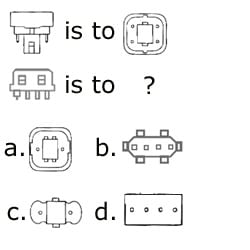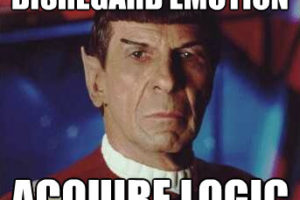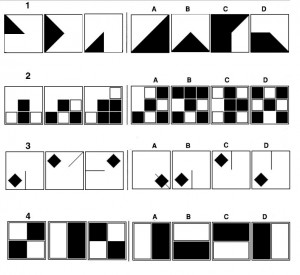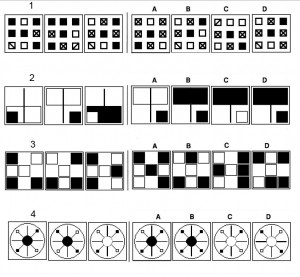
Abstract Reasoning
- Posted by Brian Stocker MA
- Date June 2, 2014
- Comments 7 comments
Abstract Reasoning Practice Questions
Intelligence Quotient IQ questions similar to the PSB HOAE, TACHS,
What is Abstract Reasoning?
Abstract reasoning refers to the ability to analyze, understand, and manipulate abstract concepts, ideas, or relationships that are not necessarily tied to concrete or tangible objects.
This includes recognizing patterns, identifying underlying principles, and making generalizations based on limited information. Abstract reasoning allows individuals to think beyond the specific details of a situation, draw inferences, and make predictions about unfamiliar or hypothetical scenarios.
Abstract reasoning questions on a standardized test generally ask you to determine the relationship between shapes or symbols in a series. See also number series
Abstract reasoning is similar to pattern recognition, which is the ability to identify regularities, trends, or repeating elements in a set of information or images. See also matching
Practice Questions
Directions: Questions 1 – 8: The first 3 figures are related. Choose the
figure that has the same relationship.
1. B
Each figure is created by adding the mirror image of the previous figure.
2. B
Each square has 2 blank squares.
3. A
The inner square is rotated clockwise on the corner of the outside square.
4. C
The bottom box is rotated counterclockwise.
Answer Key
1. D
Each figure has one more square with a cross inside.
2. C
Two large square boxes and one small square box are inverted.
3. B
Every box has three black square boxes inside.
4. D
The shape with empty inside circle has been rotated clockwise.
Date Published: Monday, June 2nd, 2014
Date Modified: Tuesday, July 4th, 2023
You may also like
Listening Comprehension Practice – Solving a Problem
Listening Comprehension Practice – Everyday Conversations Below is an everyday conversation divided into 3 sections. After each section are questions – play the questions, then choose the best answer. Tests that have Listening Comprehension questions: Canadian Firefighter, CAEL and CELPIP …




7 Comments
for question 4 why is it counterclockwise and not clockwise?
Right you are – clockwise! thanks!
it is dealing with movements in 1/4 increments. As well as it being mirrored, so theoretically there is no clockwise or counter clockwise in this picture.
Regarding set 1, question 2: While it could be noted that the first 3 figures have only 2 “bordered white boxes” (which are very difficult to see in the answer options), it is also observable that each successive figure as an additional black box. The first figure has 2, the second has 3, the third has 4. Answer “D” is the only one that has 5 black boxes. How is one to know that the desired answer favors the constant of two white boxes over the constant of an increase of 1 black box?
good !!
very hellpful thanks for providing
Thanks!